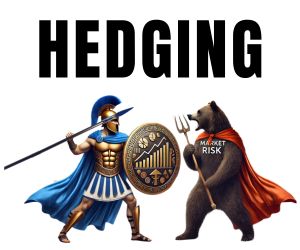HOW TO TRADE CORRELATED PAIRS IN FOREX
Currency pairs in the Forex market rarely move in isolation. Many share economic drivers, commodity links, or interest rate dynamics that make their prices rise and fall together. These relationships, known as correlations, can help traders spot opportunities but also create hidden risks when positions overlap. In this guide, we’ll explain the basics of correlation, show how to identify links between pairs, and outline trading strategies that use correlations to manage risk and improve results.

Correlation Basics
In financial markets, correlation is the statistical relationship between two assets — how often and how closely they move together. In Forex, this concept applies directly to currency pairs. Because global currencies are influenced by overlapping factors like economic growth, commodity demand, and interest rate policy, it is common for certain pairs to rise and fall in tandem, while others move in opposite directions. For traders, understanding correlation is not an academic exercise. It is a practical tool that helps reduce redundant exposure, avoid double risk, and design strategies that can profit from related moves.
What Correlation Measures
Correlation is most often measured using the correlation coefficient, a number ranging between -1 and +1. A coefficient close to +1 means two currency pairs have historically moved in the same direction almost perfectly. A value near -1 indicates that they have tended to move in opposite directions. A value around 0 implies no consistent relationship. For example, EUR/USD and GBP/USD typically show a strong positive correlation, while USD/JPY and gold often display an inverse relationship.
In practice, correlations are never static. They fluctuate over time due to changes in monetary policy, shifts in global trade flows, and evolving investor sentiment. A pair that once tracked closely with another may decouple during certain periods, making ongoing measurement essential. Traders often use rolling correlation analysis, such as 30-day or 90-day windows, to capture the current state of relationships rather than relying on outdated assumptions.
Why Correlation Matters in Forex
Correlation matters for two core reasons: risk management and opportunity. On the risk side, entering multiple positions in highly correlated pairs can unintentionally double a trader’s exposure. For example, going long on both EUR/USD and GBP/USD is effectively placing two bets on dollar weakness, since both pairs tend to rise when the dollar falls. If the dollar unexpectedly strengthens, losses are magnified. Recognising correlation allows traders to diversify properly instead of holding multiple versions of the same position.
On the opportunity side, correlation provides signals and trading setups. If two pairs that normally move together begin to diverge, the discrepancy may point to a short-term mispricing. Traders can build strategies around such divergences, betting that the gap will eventually close. In this sense, correlation analysis not only prevents unwanted risk but also opens the door to new ideas.
Examples of Common Correlations
Several well-known relationships illustrate how correlation works in the Forex market:
- EUR/USD and GBP/USD: These pairs often move together because both are heavily influenced by the US dollar and by similar European economic drivers. When the dollar weakens, both pairs tend to rise, reflecting the shared sensitivity to US monetary policy.
- AUD/USD and NZD/USD: The Australian and New Zealand dollars are commodity-linked currencies, often influenced by demand from China. Their economies are closely tied, which makes these pairs display a strong positive correlation.
- USD/CHF and EUR/USD: The Swiss franc has long been considered a safe-haven asset. Historically, USD/CHF often moves in the opposite direction of EUR/USD, reflecting the franc’s unique role in times of stress.
- USD/JPY and Equity Markets: While not a currency pair correlation per se, USD/JPY is often correlated with global stock indices, particularly during risk-on and risk-off swings. A rally in equities tends to weaken the yen as investors move into higher-yielding assets.
These correlations are not absolute rules but tendencies observed over long periods. Traders who rely on them still need to confirm relationships with up-to-date data, since correlations can shift suddenly when economic or geopolitical shocks hit.
Dynamic Nature of Correlations
One of the most important lessons about correlation is that it is dynamic. For example, during normal conditions, AUD/USD and NZD/USD may move almost in lockstep. But in times of crisis — such as the global financial crash in 2008 or the early months of the COVID-19 pandemic in 2020 — the correlation can weaken or even break. Investors reassess risk differently, leading to divergent behaviour between currencies that usually trade together. This fluidity makes it dangerous to assume past correlations will always hold.
Another source of change is central bank policy. If the Reserve Bank of Australia tightens rates while the Reserve Bank of New Zealand holds steady, the previously strong correlation between AUD and NZD pairs may weaken. Similarly, shifts in commodity demand, particularly from China, can strengthen or loosen these ties over time. For this reason, successful traders treat correlation as a living variable that must be measured regularly, not as a fixed law.
How Traders Measure Correlation
Traders use several tools to measure correlation:
- Correlation Coefficient Tables: Many trading platforms and data providers publish correlation tables showing how pairs have moved together over different timeframes. These are quick references for spotting strong relationships.
- Excel and Statistical Software: Some traders export price data into spreadsheets or tools like Python or R to calculate rolling correlations and visualise changes over time.
- Chart Overlays: A simpler method is to overlay two currency charts on the same scale. While less precise than statistical coefficients, it offers a visual sense of whether pairs are moving together or drifting apart.
Each method has its advantages. Tables provide snapshots, spreadsheets allow deep analysis, and overlays give intuitive confirmation. The best approach often combines all three to ensure both precision and practical insight.
Benefits and Limits of Using Correlation
Correlation is powerful, but it is not a silver bullet. Among its key benefits are improved diversification, smarter position sizing, and the ability to design pair trading strategies that exploit convergence or divergence. At the same time, correlations can mislead if traders assume relationships will remain static. Sudden geopolitical shocks, unexpected policy moves, or global liquidity crunches can scramble relationships overnight. For this reason, correlation should always be viewed as one input in a broader analysis, not as a sole trading signal.
The real skill lies in balancing correlation insights with fundamental analysis, technical signals, and macro awareness. Used properly, it can reduce redundant risks and highlight opportunities others overlook. Used carelessly, it can lead to overconfidence and overexposure.
Identifying Links
Spotting correlations in the Forex market is both an art and a science. The science involves statistical calculations and data analysis, while the art lies in interpreting those numbers in the context of global events and market psychology. Identifying links between currency pairs helps traders avoid doubling up on the same risk and uncovers opportunities to build strategies around convergence and divergence. To do this effectively, traders need to combine quantitative tools with qualitative insights drawn from macroeconomic trends, policy shifts, and market sentiment.
Quantitative Methods for Identifying Correlations
The most straightforward way to identify correlations is through correlation coefficients. Many brokers and data services publish correlation tables that show how major and minor pairs have moved together over different timeframes. For instance, a table may reveal that over the past 30 days, EUR/USD and GBP/USD have had a correlation of +0.85, suggesting a strong positive relationship. By contrast, USD/CHF may show a correlation of -0.75 with EUR/USD, indicating they often move in opposite directions.
Rolling correlations are especially useful. Instead of calculating the relationship over a fixed period, traders examine how the correlation evolves over time. A 90-day rolling window can highlight whether a traditionally strong relationship is strengthening, weakening, or even reversing. This dynamic view prevents traders from relying on outdated assumptions, as correlations can change rapidly in response to shifting interest rate policies or sudden geopolitical developments.
Another quantitative method is regression analysis, where one pair’s returns are statistically tested against another’s. This can reveal not only whether a relationship exists but also its strength and potential lead-lag characteristics. For example, if EUR/USD movements tend to precede GBP/USD by several hours, traders may exploit that knowledge to anticipate moves in the latter pair.
Qualitative Drivers of Correlations
While statistics are valuable, they cannot fully explain why pairs move together. To identify links properly, traders must consider the economic, financial, and geopolitical forces shaping currency behaviour. Several factors consistently drive correlations:
- Shared Reserve Currency: Many pairs include the US dollar, which often acts as a central hub. As a result, pairs like EUR/USD and GBP/USD both respond strongly to shifts in Federal Reserve policy, creating natural positive correlation.
- Regional Proximity: Currencies from countries with close economic ties often display strong relationships. The Australian dollar and New Zealand dollar are prime examples, reflecting shared export markets and sensitivity to Chinese demand.
- Commodity Dependencies: Commodity-linked currencies, such as AUD, CAD, and NOK, often move together when global demand for raw materials rises or falls. Oil price swings, for example, can cause simultaneous reactions in CAD and NOK pairs.
- Risk-On and Risk-Off Dynamics: Market sentiment also drives correlations. In risk-off environments, safe-haven currencies like the Japanese yen and Swiss franc often strengthen together, while risk-sensitive currencies weaken.
Understanding these drivers helps traders interpret whether a correlation is likely to hold, strengthen, or break. For instance, if two currencies share a commodity dependency but one country suddenly changes its export policies, the correlation may deteriorate. This is why qualitative context is essential alongside statistical analysis.
Timeframe Considerations
Correlations can look very different depending on the timeframe. Over long horizons, macroeconomic fundamentals dominate. For example, EUR/USD and GBP/USD may show consistently high correlation over years because both are driven by European and US policies. However, on intraday or weekly horizons, short-term divergences emerge due to data releases, political headlines, or temporary liquidity shifts. Traders who fail to align their timeframe with their strategy risk misinterpreting correlation data. A swing trader should focus on weekly or monthly correlations, while an intraday scalper should monitor short-term relationships.
Tools and Platforms for Identifying Links
Modern platforms provide a range of tools for correlation analysis. MetaTrader and TradingView allow traders to overlay charts of different pairs for visual comparison. Specialist software, such as Bloomberg Terminal or Reuters Eikon, offers advanced correlation matrices, regression tools, and historical databases. Even simple spreadsheets like Excel can be powerful when combined with downloadable price data. By running correlation functions across chosen timeframes, traders can build custom matrices that reflect their own trading horizons and instruments of interest.
Some traders prefer to keep it simple, using a handful of trusted overlays and correlation tables. Others build detailed models that track dozens of pairs and update daily. The key is consistency: correlations must be checked regularly, not treated as a one-off calculation.
Recognising False or Temporary Correlations
A danger in correlation analysis is mistaking coincidence for causation. Two pairs may appear correlated for a short period due to random noise rather than fundamental linkage. For example, EUR/JPY and USD/MXN might display a high correlation for a month, but unless there is a clear economic or financial driver behind it, the relationship may be fleeting. Traders should always ask: does this correlation make sense given what I know about the underlying economies?
Another trap is over-reliance on outdated correlations. For years, USD/CHF was considered a near-perfect hedge against EUR/USD. However, after the Swiss National Bank abandoned its euro peg in 2015, the relationship shifted dramatically. Traders who clung to the old assumption faced significant surprises. This highlights the importance of monitoring how correlations evolve rather than treating them as static truths.
Case Studies of Identifying Links
Case studies bring the theory of identifying links to life. Consider the correlation between AUD/USD and copper prices. Australia is a major copper exporter, and the health of its trade balance is tied to global demand. Traders who tracked the copper-AUD relationship identified profitable opportunities during commodity booms and busts. Similarly, the Canadian dollar (CAD) often tracks oil prices, making USD/CAD a favourite pair for energy-focused traders.
Another case study involves risk sentiment during crises. In early 2020, when the COVID-19 pandemic rattled markets, correlations tightened sharply. Safe-haven currencies such as JPY and CHF strengthened simultaneously, while emerging-market currencies weakened together. Traders who recognised this cluster of correlations were able to adjust exposure quickly, reducing risk and aligning with prevailing flows.
Practical Guidelines
- Check correlations frequently — they change with market conditions.
- Always combine statistical data with qualitative analysis of economic drivers.
- Use multiple timeframes to ensure the correlation matches your strategy horizon.
- Be wary of spurious correlations without clear economic logic.
- Monitor how policy decisions and global events reshape traditional links.
By combining these guidelines with disciplined analysis, traders can move beyond superficial observations and build a deeper understanding of how currencies relate to one another. This awareness forms the foundation for building effective correlation-based strategies, which we’ll explore in the next section.
Trading Strategies
Once a trader understands correlation and learns to identify links between pairs, the next step is to apply this knowledge in practice. Trading strategies built on correlation can help manage risk, hedge exposure, or exploit divergences between related markets. While no method is foolproof, using correlation as part of a structured approach gives traders an extra layer of insight into how their portfolio behaves under different market conditions. Below, we explore several strategies, ranging from conservative risk controls to more active trading tactics.
Diversification and Risk Reduction
One of the simplest strategies using correlation is to avoid doubling exposure. Many new traders unknowingly open positions that are effectively the same trade. For example, going long EUR/USD and GBP/USD simultaneously often amounts to betting twice on dollar weakness. By recognising the correlation between these pairs, traders can limit themselves to one position or scale down position sizes to keep risk balanced. This form of diversification is not glamorous, but it is one of the most powerful ways to improve long-term survival.
Another approach is to hold positions in negatively correlated pairs to offset risk. For instance, if a trader wants to maintain exposure to the euro but worries about sudden dollar strength, they might balance a long EUR/USD position with a long USD/CHF trade. Because EUR/USD and USD/CHF often move in opposite directions, this combination creates a natural hedge, reducing potential drawdowns if the dollar strengthens.
Hedging with Correlated Pairs
Hedging is a step beyond diversification. Instead of simply reducing exposure, traders use correlations deliberately to protect positions. A classic hedge involves offsetting a position in one pair with an opposite position in another highly correlated pair. Suppose a trader is long AUD/USD, anticipating gains from strong commodity demand. If risk sentiment suddenly worsens, both AUD/USD and NZD/USD may fall together. By shorting NZD/USD, the trader creates a hedge that cushions losses without abandoning the core AUD/USD view.
Hedging with correlated pairs is not without challenges. The hedge ratio — how much of one pair offsets the other — must be carefully calculated. Too small, and the hedge fails to protect; too large, and the hedge overwhelms the original trade. Traders often experiment with different lot sizes or use historical correlation data to determine the most effective balance.
Pair Trading and Arbitrage
Pair trading, borrowed from equity markets, is a strategy where traders exploit divergences between two correlated instruments. In Forex, this might involve monitoring EUR/USD and GBP/USD. If they normally move together but suddenly diverge, a trader could go long the weaker pair and short the stronger one, expecting the gap to close. This mean-reversion style of trading does not depend on broad market direction — profits come from the relative movement of the two pairs.
Arbitrage strategies take this idea further, seeking small, fleeting mispricings between correlated pairs or across different brokers. True arbitrage opportunities are rare in modern markets due to speed and technology, but relative value trades based on correlation remain common. These strategies require discipline and fast execution, as divergences can persist longer than expected before realigning.
Correlation as a Confirmation Tool
Correlation can also serve as confirmation for broader strategies. Suppose a trader expects dollar weakness and is considering a long position in EUR/USD. Observing simultaneous strength in GBP/USD and AUD/USD — both positively correlated with EUR/USD — can reinforce the conviction. Conversely, if other correlated pairs fail to confirm, it may be a signal to wait or reduce position size. This method uses correlation not as the primary signal but as a secondary filter to improve trade selection.
This approach mirrors how professional portfolio managers think about diversification. They rarely bet on a single asset in isolation; instead, they assess whether related markets are sending the same message. In Forex, confirmation through correlated pairs reduces the risk of being blindsided by a sudden reversal.
Correlation in Trend and Range Strategies
Correlation analysis can also support traditional technical strategies. In trend-following systems, traders may look for confirmation across correlated pairs before committing. For example, a breakout in EUR/USD might carry more weight if GBP/USD is also pushing higher, reinforcing the idea of broad dollar weakness. In range-trading strategies, correlations can highlight when to fade moves. If EUR/USD spikes but GBP/USD lags behind, the disparity may signal a short-term correction opportunity.
These applications are subtle but powerful. Instead of trading one chart in isolation, traders consider a network of related markets, giving them a broader perspective on the forces driving price action.
Managing Portfolio Exposure
Professional traders often think in terms of portfolio exposure rather than single trades. Correlation is central to this approach. A portfolio heavily weighted toward positively correlated pairs carries more concentrated risk than one balanced across different exposures. For example, a portfolio of long EUR/USD, long GBP/USD, and long AUD/USD is effectively a triple bet against the US dollar. Adding a short USD/JPY position may seem like diversification, but if all positions are dollar-driven, risk remains concentrated.
By mapping out correlations, traders can adjust position sizes to keep exposure balanced. Some may use sophisticated software to calculate overall portfolio correlation, while others simply rely on experience and common sense. Either way, the goal is the same: avoid unintended concentration and create a mix of trades that behave differently under various conditions.
Limitations of Correlation Strategies
Correlation-based strategies are not without pitfalls. Relationships can shift quickly in response to news events, policy changes, or market stress. What looked like a strong positive correlation may break down just when it is most needed. Traders must therefore remain flexible, ready to adapt when correlations weaken or reverse. Overconfidence in correlation can lead to disaster if it blinds traders to new risks.
Another limitation is execution. Strategies like pair trading require precise timing and careful risk management. Divergences between correlated pairs can persist longer than expected, leading to drawdowns before convergence occurs. Hedging strategies, meanwhile, may reduce losses but also cap gains, frustrating traders who over-hedge. Recognising these trade-offs is essential to using correlation effectively.
Bringing It All Together
The most effective way to trade correlations is to integrate them into a broader framework. Correlation should complement, not replace, technical analysis, fundamental analysis, and sound risk management. It is a lens that sharpens awareness of how trades interact, both individually and as part of a portfolio. For some traders, correlation is mainly a defensive tool, helping them avoid overexposure. For others, it is an offensive weapon, providing opportunities to profit from divergences or confirm larger trends.
Ultimately, the power of correlation lies in perspective. It reminds traders that no currency pair exists in isolation and that markets are interconnected in ways that can both create risk and generate opportunity. Those who learn to use correlation wisely gain a deeper understanding of the Forex landscape and improve their ability to navigate its complexity.








